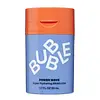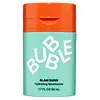What's inside
What's inside
 Key Ingredients
Key Ingredients

 Benefits
Benefits

 Concerns
Concerns

 Ingredients Side-by-side
Ingredients Side-by-side

Water
Skin ConditioningC15-19 Alkane
SolventGlycerin
HumectantButyrospermum Parkii Nut Extract
EmollientCaprylic/Capric Triglyceride
MaskingSqualane
EmollientCetearyl Alcohol
EmollientCetyl Palmitate
EmollientNiacinamide
SmoothingCoco-Glucoside
CleansingCapryloyl Glycerin/Sebacic Acid Copolymer
Skin ConditioningDiheptyl Succinate
EmollientSimmondsia Chinensis Seed Oil
EmollientGlycol Palmitate
EmulsifyingPhenoxyethanol
PreservativeXylitylglucoside
HumectantHydroxyethyl Acrylate/Sodium Acryloyldimethyl Taurate Copolymer
Emulsion StabilisingAnhydroxylitol
HumectantPolyacrylate Crosspolymer-6
Emulsion StabilisingXylitol
HumectantEthylhexylglycerin
Skin ConditioningCaesalpinia Spinosa Gum
Skin ConditioningTocopherol
AntioxidantPolysorbate 60
EmulsifyingSorbitan Isostearate
EmulsifyingCitric Acid
BufferingAvena Sativa Kernel Extract
AbrasiveOryza Sativa Bran Extract
Skin ConditioningSodium Hyaluronate
HumectantHexapeptide-9
Skin ConditioningSodium Hydroxide
BufferingWater, C15-19 Alkane, Glycerin, Butyrospermum Parkii Nut Extract, Caprylic/Capric Triglyceride, Squalane, Cetearyl Alcohol, Cetyl Palmitate, Niacinamide, Coco-Glucoside, Capryloyl Glycerin/Sebacic Acid Copolymer, Diheptyl Succinate, Simmondsia Chinensis Seed Oil, Glycol Palmitate, Phenoxyethanol, Xylitylglucoside, Hydroxyethyl Acrylate/Sodium Acryloyldimethyl Taurate Copolymer, Anhydroxylitol, Polyacrylate Crosspolymer-6, Xylitol, Ethylhexylglycerin, Caesalpinia Spinosa Gum, Tocopherol, Polysorbate 60, Sorbitan Isostearate, Citric Acid, Avena Sativa Kernel Extract, Oryza Sativa Bran Extract, Sodium Hyaluronate, Hexapeptide-9, Sodium Hydroxide
Water
Skin ConditioningIsononyl Isononanoate
EmollientGlycerin
HumectantHeptyl Undecylenate
EmollientGlyceryl Stearate Citrate
EmollientCaprylic/Capric Triglyceride
MaskingPolyglyceryl-3 Stearate
EmulsifyingCetyl Alcohol
EmollientAloe Barbadensis Leaf Juice Powder
Skin ConditioningAcrylates/C10-30 Alkyl Acrylate Crosspolymer
Emulsion StabilisingPersea Gratissima Oil
Skin ConditioningButyrospermum Parkii Butter
Skin ConditioningGlucose
HumectantHydrolyzed Pea Protein
EmollientSodium Chloride
MaskingSodium Succinate
BufferingOenothera Biennis Oil
EmollientHoya Lacunosa Flower Extract
Skin ConditioningAnthemis Nobilis Flower Extract
MaskingHydrogenated Lecithin
EmulsifyingArginine
MaskingTocopheryl Acetate
AntioxidantTocopherol
AntioxidantSodium Phytate
Phenoxyethanol
PreservativeWater, Isononyl Isononanoate, Glycerin, Heptyl Undecylenate, Glyceryl Stearate Citrate, Caprylic/Capric Triglyceride, Polyglyceryl-3 Stearate, Cetyl Alcohol, Aloe Barbadensis Leaf Juice Powder, Acrylates/C10-30 Alkyl Acrylate Crosspolymer, Persea Gratissima Oil, Butyrospermum Parkii Butter, Glucose, Hydrolyzed Pea Protein, Sodium Chloride, Sodium Succinate, Oenothera Biennis Oil, Hoya Lacunosa Flower Extract, Anthemis Nobilis Flower Extract, Hydrogenated Lecithin, Arginine, Tocopheryl Acetate, Tocopherol, Sodium Phytate, Phenoxyethanol
 Reviews
Reviews

Ingredients Explained
These ingredients are found in both products.
Ingredients higher up in an ingredient list are typically present in a larger amount.
This ingredient is an emollient, solvent, and texture enhancer. It is considered a skin-softener by helping the skin prevent moisture loss.
It helps thicken a product's formula and makes it easier to spread by dissolving clumping compounds.
Caprylic Triglyceride is made by combining glycerin with coconut oil, forming a clear liquid.
While there is an assumption Caprylic Triglyceride can clog pores due to it being derived from coconut oil, there is no research supporting this.
Learn more about Caprylic/Capric TriglycerideGlycerin is already naturally found in your skin. It helps moisturize and protect your skin.
A study from 2016 found glycerin to be more effective as a humectant than AHAs and hyaluronic acid.
As a humectant, it helps the skin stay hydrated by pulling moisture to your skin. The low molecular weight of glycerin allows it to pull moisture into the deeper layers of your skin.
Hydrated skin improves your skin barrier; Your skin barrier helps protect against irritants and bacteria.
Glycerin has also been found to have antimicrobial and antiviral properties. Due to these properties, glycerin is often used in wound and burn treatments.
In cosmetics, glycerin is usually derived from plants such as soybean or palm. However, it can also be sourced from animals, such as tallow or animal fat.
This ingredient is organic, colorless, odorless, and non-toxic.
Glycerin is the name for this ingredient in American English. British English uses Glycerol/Glycerine.
Learn more about GlycerinPhenoxyethanol is a preservative that has germicide, antimicrobial, and aromatic properties. Studies show that phenoxyethanol can prevent microbial growth. By itself, it has a scent that is similar to that of a rose.
It's often used in formulations along with Caprylyl Glycol to preserve the shelf life of products.
Tocopherol (also known as Vitamin E) is a common antioxidant used to help protect the skin from free-radicals and strengthen the skin barrier. It's also fat soluble - this means our skin is great at absorbing it.
Vitamin E also helps keep your natural skin lipids healthy. Your lipid skin barrier naturally consists of lipids, ceramides, and fatty acids. Vitamin E offers extra protection for your skin’s lipid barrier, keeping your skin healthy and nourished.
Another benefit is a bit of UV protection. Vitamin E helps reduce the damage caused by UVB rays. (It should not replace your sunscreen). Combining it with Vitamin C can decrease sunburned cells and hyperpigmentation after UV exposure.
You might have noticed Vitamin E + C often paired together. This is because it is great at stabilizing Vitamin C. Using the two together helps increase the effectiveness of both ingredients.
There are often claims that Vitamin E can reduce/prevent scarring, but these claims haven't been confirmed by scientific research.
Learn more about TocopherolWater. It's the most common cosmetic ingredient of all. You'll usually see it at the top of ingredient lists, meaning that it makes up the largest part of the product.
So why is it so popular? Water most often acts as a solvent - this means that it helps dissolve other ingredients into the formulation.
You'll also recognize water as that liquid we all need to stay alive. If you see this, drink a glass of water. Stay hydrated!
Learn more about Water